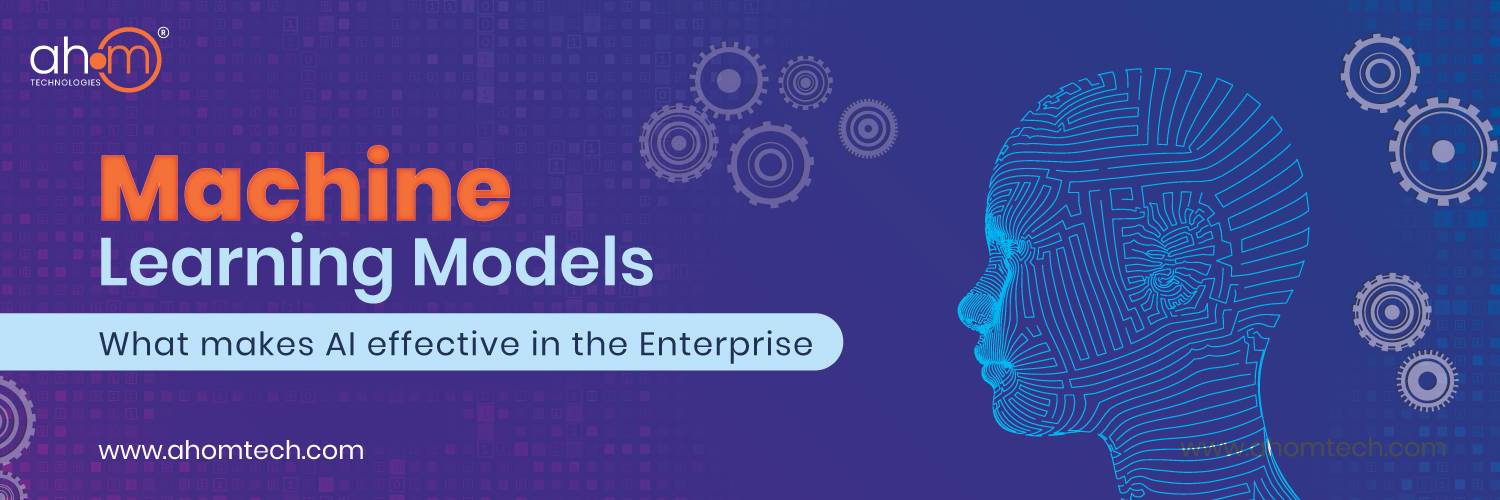Machine Learning Models make AI effective in the enterprise, But there’s a science to building the right model.
Many organizations are using AI for a wide range of business applications. But AI is not a one-size-fits-all technology.
Every AI project is customized to solve a specific business problem with machine learning models.
These models which rely on data and algorithms are what address the project’s needs. For many organizations.
Machine learning model development is a new and daunting activity, but some established methodologies help ensure success.
We break down the process of building a machine learning model into seven steps.
Understand and identify the business problem and define success.
Get a firm grasp of the business project’s objectives and requirements and set specific quantifiable goals.
Include machine learning metrics and business KPIs in calculating your estimated ROI from the project.
Understand and Identify Data.
A machine learning model is built by learning from training data, and then applying that knowledge to make accurate predictions from new data.
So identifying data needs, the quantity, quality and type is critical.
Knowing how your model will operate on real world data offline or in real time.
For example, will also play into the kind of data you need, collect and prepare data.
Once you’ve identified the data you need, you must shape it to train the model.
Data preparation tasks include data collection, cleansing, aggregation, labeling, and transformation among others.
This step can take up to 80% of the entire project, but the time spent on prepping and cleansing is well worth it to get an effective model.
Determine the model’s features and train the model.
This phase requires model techniques selection, training, hyper parameter setting, validation, development and testing, algorithm selection and model optimization.
Evaluate model performance, model evaluation is the QA of machine learning.
Adequately evaluating model performance against metrics your requirements determines how the model will work in the real world.
Evaluation includes model metric evaluation, confusion, matrix calculations, KPIs model, performance metrics, model quality measurements, and a final determination of whether the model can meet the established business goals.
Experiment and adjust the model in operation, seeing how the model works in the real world, or operationalizing.
The model might include scenarios and a cloud environment at the edge and then on premise or closed environment or within a controlled group.
And finally, repeat the process and make improvements, always iterate and reflect on what has worked in your model, what needs work and what’s a work in progress.
Types of Machine Learning Models
These can be categorized as supervised or unsupervised
Supervised Learning
It involves a series of functions that maps an input to an output based on a series of example input-output pairs.
For example; if we have a data set of two variables one being age which is the input and other being the shoe size
As output we could implement a supervised learning model to predict the shoe size of a person based on their age.
Further with supervised learning there are two sub categories:
One is regression and other is classification
In the Regression Model
We find a target value based on independent predictors.
That means you can use this to find the relationship between a dependent variable and an independent variable.
In regression models the output is continuous; some of the most common types of resistant models include.
Number one Linear Regression.
Which is simply finding a line that fits the data; its extensions include multiple linear regression, that is finding a plane of best fit.
Polynomial Regression
Polynomial Regression that is finding a curve for best fit.
Next one Decision Tree
It looks something like this where each square above is called a node and the more nodes you have the more accurate your decision tree will be.
Random Forest
Random forests are assembly learning techniques that build off over decision trees.
It involves creating multiple decision trees using bootstrap data sets of original data and randomly selecting a subset of variables at each step of the decision tree.
Classification
In classification the output is discrete, some of the most common.
Types of classification models
It includes first logistic regression, which is similar to linear regression but is used to model the probability of a finite number of outcomes.
Unsupervised Learning
Unlike supervised learning, unsupervised learning is used to draw inferences and find patterns from input data without references to the labeled outcome.
Two main methods used in Unsupervised Learning
It includes Clustering and Dimensionality Reduction
Clustering
It involves grouping of data points it’s frequently used for customer segmentation fraud detection and document classification.
Common Clustering Techniques include k-means clustering hierarchical clustering means shape clustering and density based clustering.
While each technique has different methods in finding clusters they all aim to achieve the same thing.
Dimensionality Reduction
It is a process of reducing dimensions of your feature set Auto States simply reducing the number of features.
Most dimensionality reduction techniques can be categorized as either feature elimination or feature extraction.
A popular method of dimensionality reduction is called principal component analysis or PCA .
we’ll uncovered each one of them in the next blog post, till then keep reading and connect with us at sales@ahomtech.com or contact us at +91-124 4294496



Add a Comment